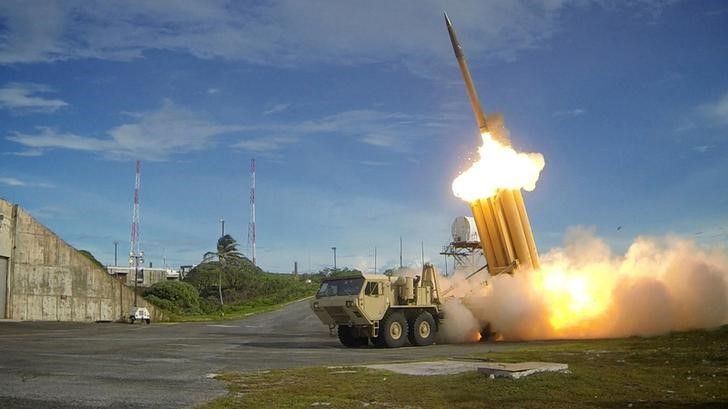THAAD Site Under Threat By North Korea? South Korea Accuses Pyongyang Of Spying Using Drone In Seongju Region

North Korea has been accused of spying on South Korea after a suspected Pyongyang drone was spotted on the site of a U.S. missile interceptor system, Seoul's military officials said Tuesday. The Terminal High Altitude Area Defense (THAAD) anti-missile system, which is designed to intercept and destroy ballistic missiles, is being deployed in Seongju in order to protect South Korea from Pyongyang's growing threats.
According to Yonhap News, the small unmanned aerial vehicle equipped with a Sony-made camera was found last week on a mountain near the inter-Korean border. The drone had apparently crashed close to the THAAD site. The South's military took the drone in custody and analysed the content of the 64-gigabyte memory chip.
Read: North Korea Tests More Missiles As US-South Korea THAAD Deployment Is Suspended
"It was confirmed that (the craft) took photos of the THAAD site in Seongju," a South Korean defense official told reporters, adding that the distance between the border and the zone in North Gyeongsang Province is around 168 miles.
Seoul’s Joint Chiefs of Staff reportedly said that they found hundreds of photos of South Korea in the memory chip, adding that authorities are trying to find where the drone came from.
U.S. and South Korea planned to deploy THAAD in a rural region some 180 miles southeast of Seoul amid growing tensions in the Korean Peninsula as Kim Jong Un's regime continued its nuclear advancements despite warnings from the international community. North Korea has conducted several ballistic missiles tests amid strong sanctions imposed by the United Nations.
The reclusive country warned the U.S. about its recent military drills with South Korea as well as its missile defense system, THAAD, installed in South Korea in April. North Korea has accused the U.S. of escalating tensions with its actions and refers to its missile launches as measures to safeguard its country. There have also been concerns that North Korea is developing a missile that could hit the U.S. mainland.
The alleged spying incident from North Korea comes around the same time when South Korean President Moon Jae-In called for a halt in the rollout of THAAD missile system pending environmental impact reports, which could take a year to complete.
“The THAAD defensive missile system is critical to protecting South Koreans from Kim Jong Un’s arsenal,” U.S. House Foreign Affairs Committee Chairman Ed Royce said in a statement last week.
“I hope any environmental concerns related to the full deployment of THAAD will be dispelled with a quick and thorough review,” the California Republican said. “We need to use every tool at our disposal — including additional sanctions — to address the Kim regime’s threats.”
Last week, North Korea tested several suspected short-range, anti-ship missiles in the latest sign of making progress with its weapons program.
Read: North Korea Says It Fired New Nuclear Missile, Wants Warhead To Hit US
Last month, a top American military commander in Seoul said the deployment of THAAD in South Korea is seen as a critical part of efforts to lessen North Korea's leverage from asymmetric weapons.
Gen. Vincent K. Brooks, who leads the U.S. Forces Korea (USFK), made the comments a day after leader Kim Jong Un reportedly ordered mass production of a medium-range ballistic missile with the ability to reach U.S. bases.
Brooks said, according to Yonhap News, a "very dangerous situation" is looming over the peninsula as North Korea carried out missile launches, claiming to be capable of carrying nuclear warheads. Pyongyang's actions are holding South Korea and neighboring countries at risk, and there is need to "take that risk away without taking his systems away," he said.
© Copyright IBTimes 2025. All rights reserved.





















